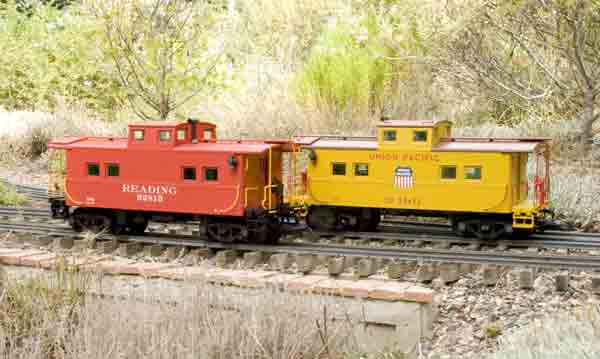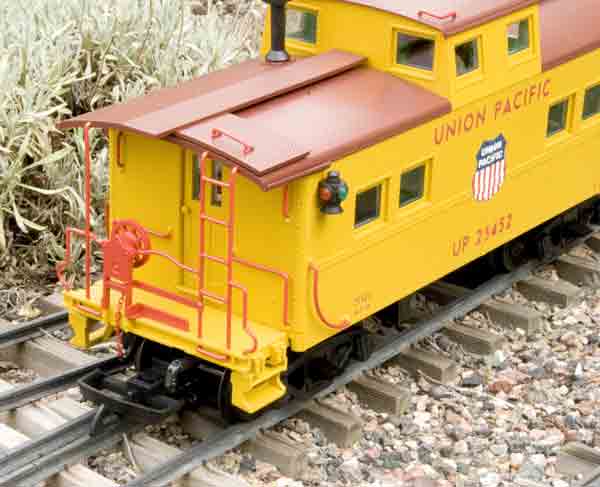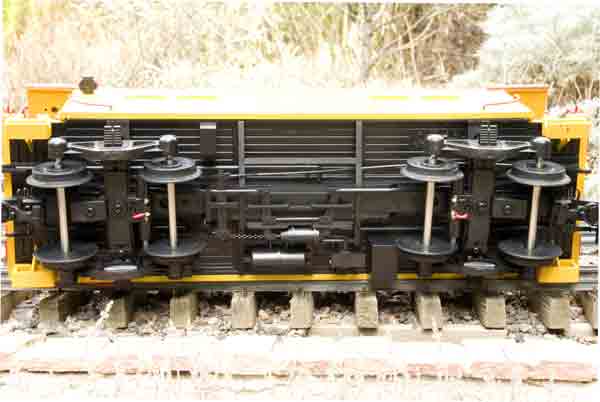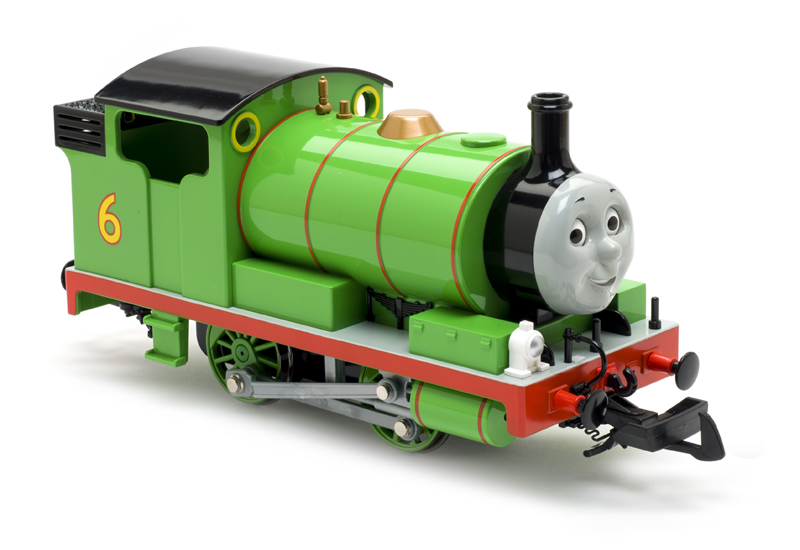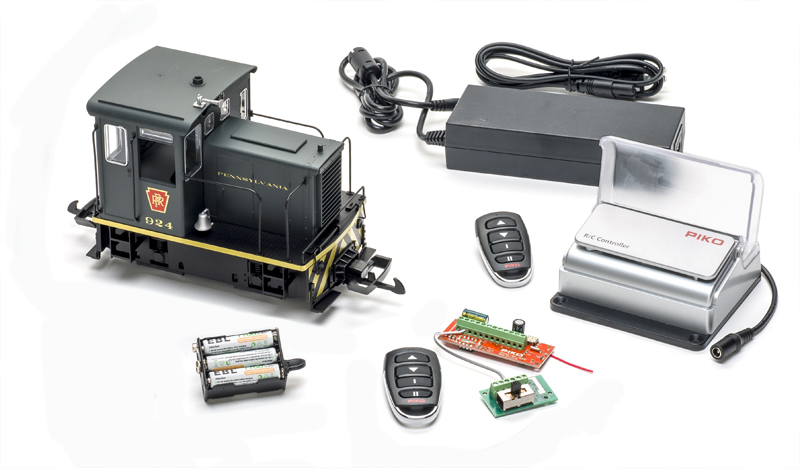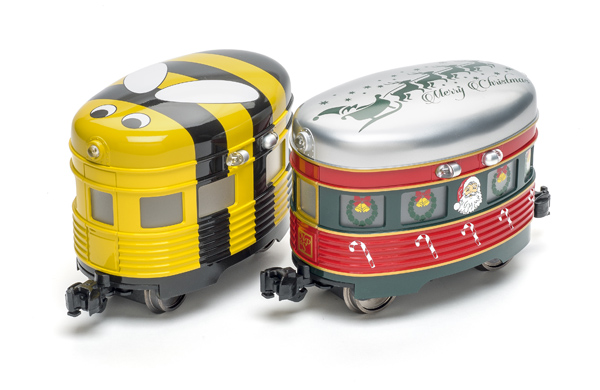USA Trains
PO Box 100
Malden MA 02148
Price: $199.95
Website: www.usatrains.com
Mostly plastic model of a standard gauge, steel, center-cupola caboose; available in a long list of road names and liveries; plastic trucks; metal wheelsets; operating lights and markers; operating fan-driven smoke unit; full interior; underbody detail; truck-mounted LGB-style hook-and-loop couplers installed; knuckle couplers also provided; metal handrails and grabs; opening doors; instruction booklet. Dimensions: Length over end beams, 12¾”; width, 37/8″; height to top of cupola, 5¾”. In 1:29 scale, this works out to 30’10” x 9’4″ x 13’11”, respectively
Pros: High fidelity to prototype; metal grabs and hand rails make the unit easy to handle without fear of breaking something; lighting features are nice; prototypically correct trucks; high level of body detail; nicely blackened wheels; provision for body-mounting Kadee couplers
Cons: Electrical pickups on wheels cause drag; strangely positioned brakeman in cupola cannot be seen through side windows; rudimentary underbody detail; “sprung” trucks are actually rigid; fairly heavy (2 lbs., 12 oz.)
Our review samples are lettered for the Reading (#R12168) and the Union Pacific (#12172). Aside from paint, the units are identical. Many other road names are offered (not all of them necessarily ones that actually ran those cabooses), as well as an undecorated version.
The model is well turned out. Body detail is excellent, as are paint and graphics. Metal handrails and grab irons make the model robust when handling. End doors open and are spring loaded. A complete interior is provided, including a brakeman sitting in the cupola. However, his chair is oddly placed between the windows and he cannot see out the side windows, nor can we see him except by looking through an end window. A little surgery would be required to move his chair to a better position.
Underbody detail, while more or less complete, is unpainted black plastic and not up to the high standard of the rest of the car. Components are just basic shapes without appropriate additional detail. However, when running in the garden they are not that visible.
Trucks are prototypical, molded in black plastic with correct (dummy) leaf springs. The instructions claim the trucks to be sprung but I found them to be quite rigid, even though I could see coil springs behind the leaf springs. Wheelsets are metal, very nicely blackened. Electrical pickup from track power for lights and smoke unit is provided via plungers bearing against the backs of four of the wheels. This causes considerable drag.
Couplers are LGB-style hook-and-loops, truck mounted. A set of knuckles is also supplied. There is provision for body mounting Kadee couplers.
There are three lights inside the caboose as well as a pair of markers at one end. In addition, the caboose is equipped with a fan-powered smoke unit. These are controlled by switches on the underside of the car, one near each truck. The marker lights can also be lit by an auxiliary, rechargeable, 9V battery (which you must supply). The advantage to this is that the lights will remain on when track power is off, when the train is stopped or the caboose is sitting on a siding. To install the battery (and service the smoke unit), the cupola is easily removed, as per the instructions.
Overall, this is an attractive, accurate, steam/transition-era caboose, and would look good behind any train representing that time.





